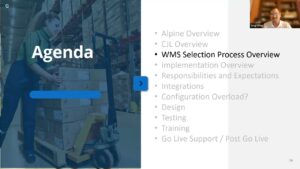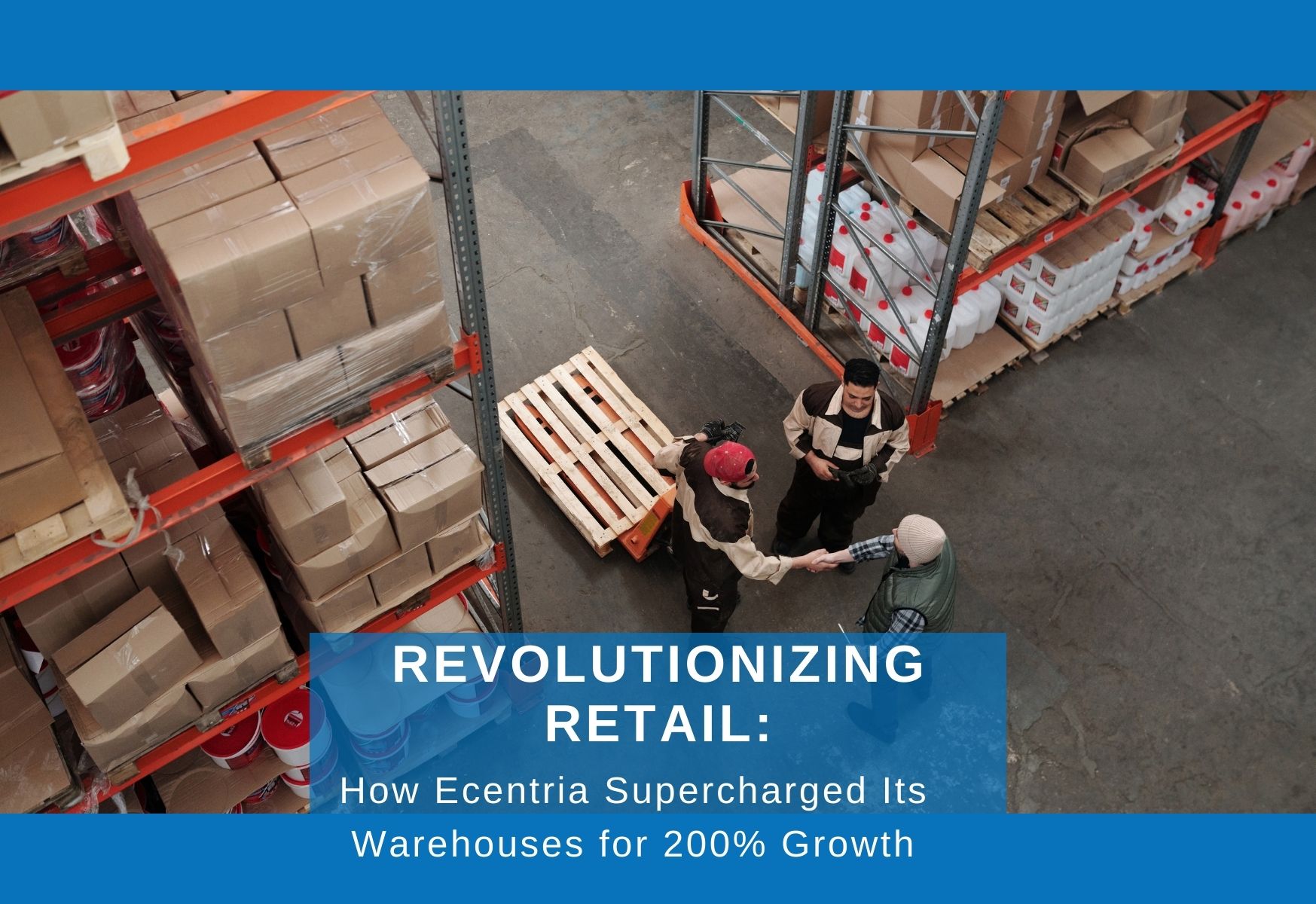Senior Director, Brad Steger Senior Director at Alpine Supply Chain Solutions has 30+ years of supply chain management experience. He’s our go-to guy for putting together big picture plans for big projects. With the buzz of the 2021 holiday season far behind us, we recently sat down with Brad to gain insight on the evolving definition of peak season and how to prepare for one. Here’s what he had to say.
Q: How has the meaning of peak season changed over the years?
A: The definition of peak season has changed a lot over the years. One main difference is that peak season is no longer reserved for the months of November and December. Sure, that’s the busiest time for CPG retailers and companies in the baked goods industry ship 90% of their annual volume in the weeks preceding Thanksgiving and Christmas, but almost every other industry will have a peak season and it could fall on any given day. Garden centers will have peaks in February and early March, while big box stores will experience peaks in July and August related to back-to-school pushes, in addition to the holiday crunch. In many ways, it’s always peak season, depending on what industry you’re in.
Another thing that’s changed, especially with the labor shortages we’re experiencing, is that it’s not just consumer behavior driving peak season any more. A distribution center may be operating during a non-peak time, but if they’re only staffed at 75%, then they are basically operating in a simulated peak season. Essentially they are doing the same amount of work with far fewer people, so it feels like a peak.
Nowadays, peak seasons can even be triggered by a consumer, or social media influencer. A company can be shipping out one pallet a day of a certain product, but after a favorable mention from today’s Kardashian, that could easily sky-rocket to 100 pallets in just a few hours! This is why it is so important for organizations to understand when their peak seasons are, but also to have plans in place to deal with unexpected demand.
Q: If your peak season is mere months away – what can you do to prepare?
A: If your peak season is coming up in a couple of months, then there really isn’t any time to make any major fixes or improvements to your processes, but you can still set yourself up for success. The most important factor is putting yourself in a position to be able to execute in the best, most efficient manner. I’d recommend to:
- Start by analyzing your current distribution processes and determining what is and isn’t working during non-peak.
- Stay aware of your “problem areas” so that you can monitor them closely during peak. This way, if anything does go wrong, you know of it early on. If and when it does, you can “bandage the issue” to make it through peak and set a reminder to find a permanent fix once you have the time and resources available.
- Make sure you have your KPIs identified and in place so you can measure how you’re doing throughout the season.
Most importantly, you want to be sure to get as much as possible prepared ahead of time, so that you can minimize the impact on customer service. Reducing customer service stress is critical no matter how much time you have until your next peak season, it’s always important.
Q: If your peak season just ended and you have 6+ months to prepare, where should you focus?
A: With this much time, you can really focus on strategy. Start by doing a post-mortem on your last peak season to learn what went well, what didn’t, and determine what changes need to be made. Six months should be enough time to come up with a permanent solution, but if not, it will at least afford you the time to have robust mitigation options in place to ensure you make it through the season without the same problems cropping up again.
You want to be sure to plan for every contingency, especially those you’re not expecting, like natural disasters decimating the entire operation. This means establishing relationships with third parties or even competitors so that you have a plan in place for when extreme circumstances occur. A third party can also be helpful in terms of staffing. Having a contract with a staff augmentation firm will help you cover any labor holes with individuals who have already been vetted and hired, reducing the amount of time it takes to find worthy replacements. Automation may also come in handy here, too. Are there any functions that can be easily automated, reducing the burden on staff and the risk of error? Implement it!
The supply chain industry can be competitive, but that doesn’t mean it’s a bad idea to foster relationships with your competition. Many times, collaborating with competitors can help you improve your business. They may have insight into a problem they’ve already addressed and you’re just now facing. Spreading and sharing wisdom will only help the supply chain industry become less volatile and more resilient.
Finally, don’t put all your eggs in one basket, you want to make sure that you have multiple sources and suppliers, so that if one can’t help you, you already have a backup who can step in without interrupting operations. Having alternative channels or different methods for getting products through the supply chain will go a long way in ensuring you stay on top.
Q: If you could give only a single piece of advice, what would it be?
A: Communicate effectively, clearly, and with purpose. Almost any industry will agree that communication is the glue that holds it all together, and that couldn’t be more true in the supply chain space. More importantly, communication needs to be all-encompassing, so don’t reserve your communication efforts for suppliers and customers alone, open it up! You want to make sure you’re on the same page with all your internal and external resources: your team, raw material providers, packaging providers, transportation providers, etc.
Q: It’s no secret that the supply chain is under more stress than ever. Shrinking resources and rising costs mean we all have to look at new ways of working. What tips can you share?
A: Adaptability and flexibility are essential. We may be dealing with labor shortages, and rising industrial real estate costs (US industrial rental rate is nearing $9 per square foot), but there are ways to work differently to surpass these challenges.
Get creative when addressing labor issues. Sure, money can go a long way to help bring employees in, like a sign-on bonus, but what other features can you offer to sweeten the pot? Offering flexible start times to accommodate planning around a family, providing lunch to employees once a week, or creating an in-office daycare center are some ways to do so!
And, as I said earlier, consider automation. Reach out to professionals to do an audit of your business to see where it may help. A consultant can come in, look at your data, and help you decide what’s best for improving your operations. After a bit of operational analysis, Alpine helped a client implement an auto carton erector that eliminated the need for resources to form and tape cartons and a pick-to-light system that increased picking productivity from 80 lines/hour to 120/hour.
Q: What can Alpine do to help companies become more competitive?
A: Alpine has a variety of experts in the areas of warehouse consulting, strategic planning, HR solutions, supply chain systems and manufacturing. Our focus is on ensuring each client gets the most out of their supply chain investments. Our approach always starts with data and ends with a cost justifiable solution. If you need help preparing for your next peak season, we’re here to help.













